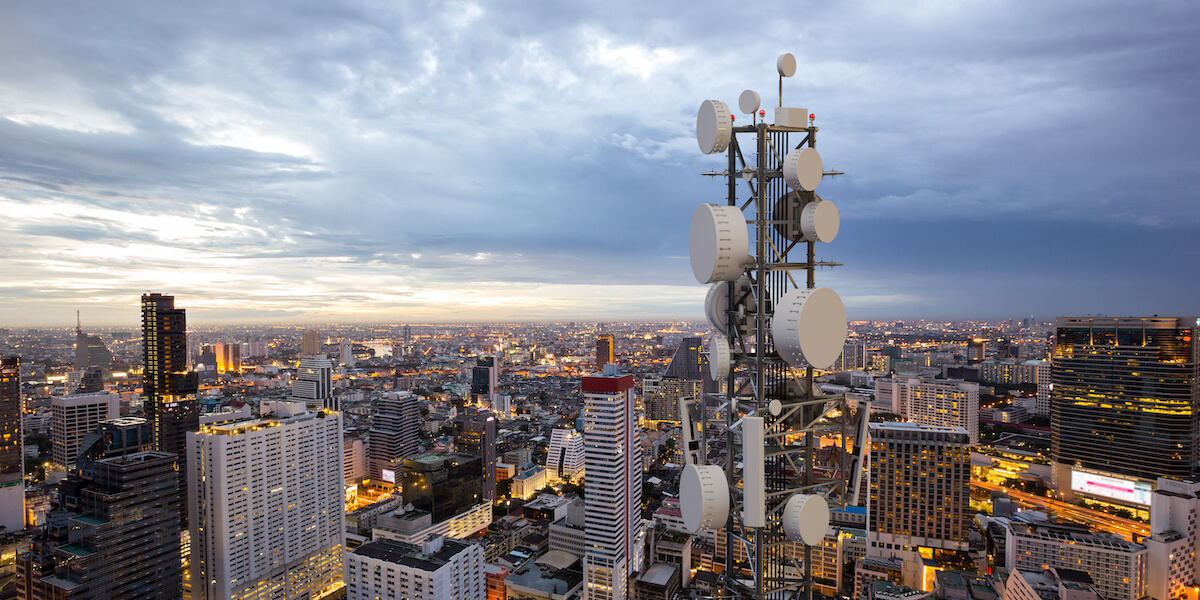5G networks are meant to be high speed, low latency networks that can be deployed with agility and speed. 5G networks have achieved over 20 - 30x performance improvement over the 4G LTE networks, i.e., 20 GBPS. This type of network capability has created tremendous possibilities across multiple industries. The anticipated economic value of 5G networks, according to Qualcomm, is $13.1 trillion by 2035. This capability will also generate more than 23 million jobs across various segments.
Many companies have started to explore deployment of 5G networks across their value chain and evaluate the possibilities of managed application capabilities. This post will explore the impact of 5G to manufacturing value chain activities.
Supply Chain Disruptions
It's become increasingly important for us to evaluate deployment of newer technologies like 5G to help overcome many of the supply chain issues that we have seen in the recent past. If history is an indicator, we should anticipate more of these disruptions in the future and must be better prepared to handle them. COVID had created widespread disruptions in supply chain – from factory shutdowns to unanticipated demand. Then came the Suez Canal blockages which disrupted shipping lanes for weeks at a time. Ukraine is one of the largest producers of wheat and barley and is expected to harvest less than half of its normal capacity. Disruption in sourcing from Ukraine have set food prices skyrocketing.
The common theme across all these scenarios is the ability to anticipate and react. The anticipation of a business trend is influenced by patterns and trends that can be recognized early enough, giving us a fair opportunity to respond and adjust. Having the ability to deploy zero latency data and information collection mechanisms and leveraging advanced machine learning algorithms that identify and react to exceptions / anomalies, will be a game changing capability that will help us mitigate the impacts of various disruptions.
Value Chain Activities that are Impacted
Supply chain activities fundamentally fall into four broad categories: sourcing, production, transportation, and personnel. These categories can further be decomposed into individual capabilities and activities. Many of our customers are exploring applications of 5G networks and these categories to future proof their businesses. The business use cases being explored are prioritized based on the value associated and the ability to scale across the wider supply chain.
Cost and Return
Typical components for a successful 5G implementation –
• 5G communication infrastructure
• Gateways to collect sensor data from manufacturing capacity centers
• Data/Information collection, organizing and correlating for generating intelligence
• Intelligence generating analytics
Based on an assessment done for a large manufacturing customer, we anticipate an 18 month break-even point for the initial deployment costs of these capabilities. Organizations can transition from initial capital expenses to managed applications providing tremendous cash flow efficiencies and ability to justify the investments.
How does 5G address…?
1. Sourcing
Our ability to source raw materials and partner with various suppliers across the world has become paramount in this shrinking global economy. As an example, there are about 1800 different suppliers that provide different components for a Boeing 787. These suppliers are peppered all over the world, ranging from landing gear from Mitsubishi Japan to Ailerons from France to engines from GE and Rolls Royce, etc.
Having a near real time visibility into the supplier’s raw material, inventory positions, capacity schedules and production plans allows us an opportunity to align activities to plans. The misalignment is a warning capability to anticipate anomalies and react to it efficiently. It's not just the ability to anticipate if you have enough material to work with but also the associated cost that is influenced by demand and supply.
2. Logistics – planning, access, and tracking
One of the largest global automotive manufacturers based out of Europe is mandating the top 75% logistics suppliers to have location- and weight-based sensor data to be accessible in real time. This technology will be leveraged to accurately predict lead and arrival times. The trucking weight allows the validation of Bill of Lading (expected weight of shipment) and helps avoid shrinkage during shipments. This near real time data is to be ingested via 5G gateways at manufacturing shop floors leading to tighter integration with manufacturing and optimized planning.
3. Manufacturing – asset management (productivity), inventory visibility
Analysis done for a large consumer goods company in the Midwest indicated that a corporate mandate to drive asset efficiency at manufacturing locations to over 95% was driving up manufacturing costs by about 30% compared to the normalized efficiency pre-mandate of 80%. Having a 5G network providing real time information on production bottlenecks and providing advanced warning capabilities on low inventories across different work centers will help drive optimum asset utilization.
4. Personnel management – training and productivity
Personal engagement and training are not just a one-time event but an ongoing monitoring, coaching and adjustment of behaviors. A significant portion of training is change management. Change management is about enablement, not just about driving an online course. The effect of change management stems from the accurate understanding of hindrances and roadblocks. Having real time productivity details can help us better anticipate the root cause for productivity challenges and present customized opportunities for training.
5G Exponentially Elevates AL/ML Applications Effectiveness
5G networks will exponentially increase our access to sensor data that is available all around us. The sensor data may be coming from temperature sensors on the factory floors or cameras installed at a distribution center to keep track of product placement. With this explosion of data, we also need the advanced capabilities of deriving intelligence and a reaction mechanism from these data points.
Our ability to orchestrate an efficient and effective machine learning ecosystem is of paramount importance. Deploying the right machine learning ecosystems is as much foundational to overall 5G capabilities as it is to deploy network capability to collect the data. Teradata is pioneering these capabilities through a catalog of feature stores that can be deployed across multiple use cases.

